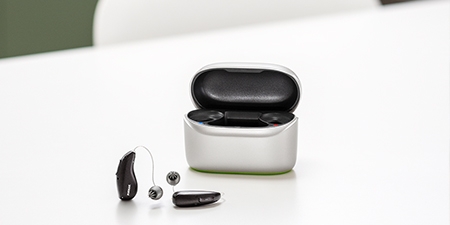What Is Brown Noise and What Is It Good For?

What Is Brown Noise and What Is It Good For?
10 min
Published September 30, 2025
Brown noise has gained significant attention in recent years in the realm of soundscapes designed to promote relaxation, focus, and improved sleep. Known for its unique properties and potential benefits, brown noise has become a popular choice for those seeking auditory relief.
So, What Is Brown Noise?
Brown noise (or Brownian noise) is a type of sound characterized by a frequency spectrum that has a power density inversely proportional to the frequency squared. Wait, what?
As the frequency, or pitch, of the sound increases, the energy or power decreases. This results in a noise that has a deeper, more rumbling quality compared to white noise or other color noises. Brown noise is often referred to as "red noise" due to its association with the color red on the electromagnetic spectrum¹.
However, the name does not come from the color, but the man who documented the motion of inanimate particles in water, Robert Brown¹.
What Does Brown Noise Sound Like?
Brown noise is often described as a low-frequency, deep, and consistent rumbling sound. It lacks the sharpness or hiss of higher-frequency white noise and has a more "full" and soothing quality. To some, it may resemble the sound of ocean waves crashing, distant thunder, or a gentle waterfall.
Brown Noise Examples
Brown noise can be found in various natural sources and can also be artificially generated. Some examples of sources that produce brown noise include:

- Waterfalls: The constant flow of water over rocks and cascades generates a sound akin to brown noise. Many people find the sound of waterfalls soothing and use recordings of them for relaxation and meditation.
- Thunder: The deep rumble of thunder during a storm contains elements of brown noise. While thunderstorms can be unsettling for some, others find comfort in the low-frequency rumbles.
- Wind: Strong winds whipping through trees or across open spaces can produce a sound reminiscent of brown noise. This is often considered a natural form of brown noise.
- Heartbeats: The rhythmic beat of a human heart also exhibits characteristics of brown noise, particularly in the lower frequencies. This natural sound can be calming and reassuring.
Brown Noise vs White Noise
Brown noise and white noise are both types of stochastic, or random, sounds, but they differ in terms of their frequency characteristics²:
Five Benefits of Brown Noise
Brown noise offers a range of potential benefits for various situations and conditions, including:
- Sleep: Many individuals find brown noise helpful for improving sleep quality. Its soothing, low-frequency characteristics can mask disruptive noises and promote a sense of calm, helpful in falling asleep and staying asleep.
- Relaxation: Brown noise is commonly used in meditation, yoga, and relaxation practices. Its gentle, consistent sound makes it easier to unwind and reduce stress.
- Focus: Some people use brown noise to enhance concentration and productivity, especially in noisy or distracting environments. The steady sound can create a focused atmosphere.
- Anxiety Reduction: Brown noise may help reduce anxiety and promote a sense of tranquility. Its calming properties can be comforting during moments of stress or unease.
- Tinnitus Relief: People with tinnitus, a condition characterized by persistent ringing or buzzing in the ears, may find relief in brown noise, as it can help mask the perception of tinnitus sounds³.
Hearing Loss and Perception of These Noises
Hearing loss can impact the perception of various sounds, including white noise, brown noise, and other ambient sounds. Depending on the nature and severity of the hearing loss, individuals may have difficulty hearing certain frequencies or distinguishing between different sounds. Hearing aids can help mitigate these issues by amplifying specific frequencies and improving overall hearing.
Audiologists can adjust hearing aids to enhance the perception of brown noise or other background sounds, making it easier for individuals with hearing loss to benefit from the calming and masking properties of brown noise.
Why Is Brown Noise Good for ADHD?
Brown noise's potential benefits for individuals with Attention Deficit Hyperactivity Disorder (ADHD) stem from its ability to provide a steady and non-distracting auditory environment. ADHD is often associated with increased sensitivity to environmental stimuli, which can make it challenging for individuals to focus and concentrate. Brown noise can help in the following ways:
- Masking Distractions: Brown noise can mask sudden noises or distractions in the environment, allowing individuals with ADHD to maintain better focus on their tasks.
- Calming Effect: The deep, soothing quality of brown noise may have a calming effect on individuals with ADHD, helping to reduce feelings of restlessness and impulsivity.
- Improved Concentration: A consistent auditory backdrop provided by brown noise can create a more favorable environment for sustaining attention and concentration.
Is Brown Noise Bad In Any Way?
In general, brown noise is considered safe and beneficial for most people when used appropriately. However, there are a few considerations to keep in mind:
Do Dogs Like Brown Noise?
Dogs' reactions to brown noise or any sound can vary widely depending on their individual temperament and experiences. Some dogs may find brown noise soothing, while others may be indifferent or even become anxious. It's essential to pay attention to your dog's behavior and adjust the volume or type of sound accordingly. If you believe your dog is stressed or anxious, consult with a veterinarian or animal behaviorist for guidance on managing their environment and well-being.
Summary
Brown noise, characterized by its deep, rumbling qualities, offers a range of potential benefits for relaxation, sleep, focus, anxiety reduction, and tinnitus relief. Its soothing properties have made it a valuable tool for various applications, including aiding individuals with ADHD.
While brown noise is generally safe and effective for most people, individual preferences may vary, and it's important to use it at a comfortable volume. Additionally, hearing aids can help individuals with hearing loss perceive these noises more clearly, further enhancing their potential benefits.
References:
¹ Wikipedia contributors. (2023). Brownian noise. In Wikipedia, The Free Encyclopedia. Retrieved 09:47, September 21, 2023, from https://en.wikipedia.org/w/index.php?title=Brownian_noise&oldid=1170452977
² Djalilian, H. R., & Lee, A. (2017). Tinnitus Treatment with Sound. In Tinnitus: Clinical and Research Perspectives (pp. 291-303). Springer.
³ Aouedi, R., Elnady, A. M., & Elbasiouny, S. M. (2019). Impact of Noise on Cognitive Performance: A Review. Noise & Health, 21(102), 125-133.




